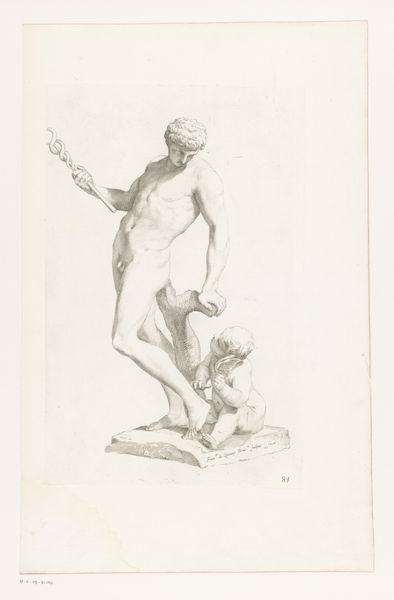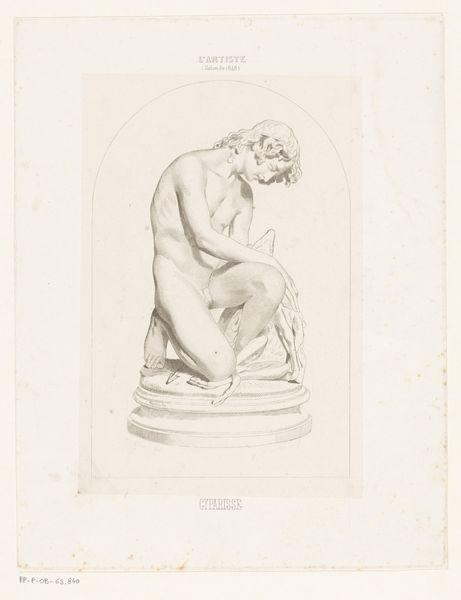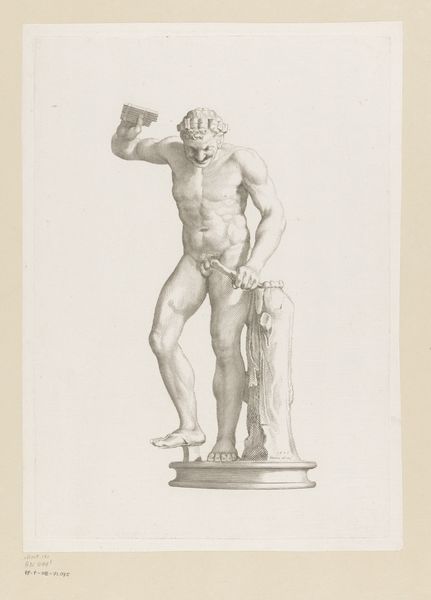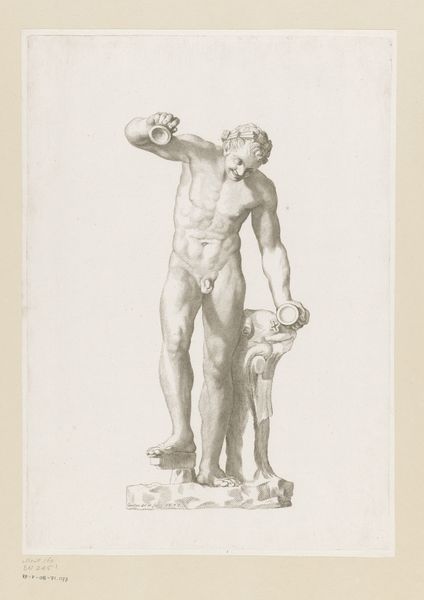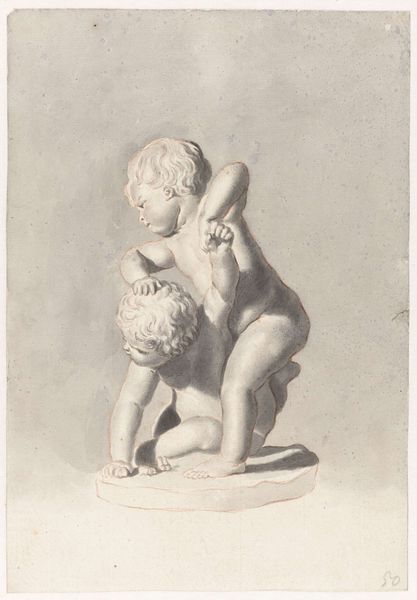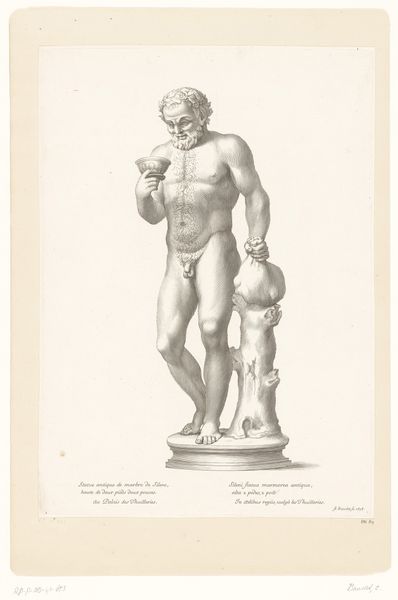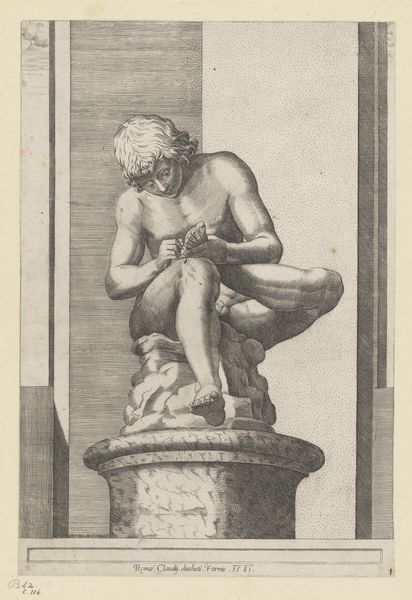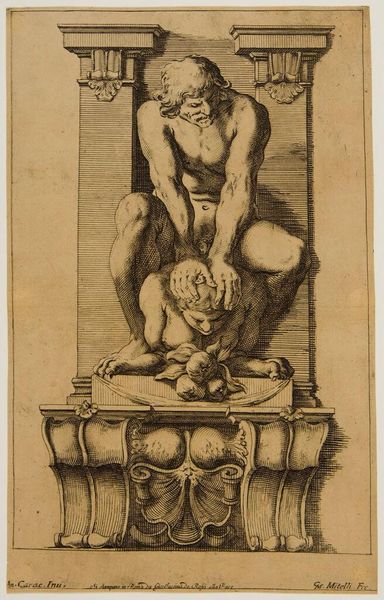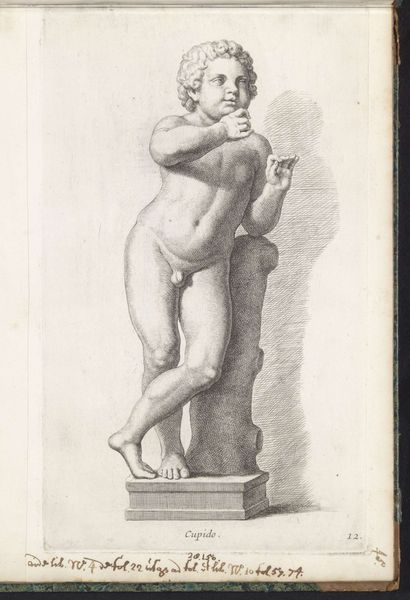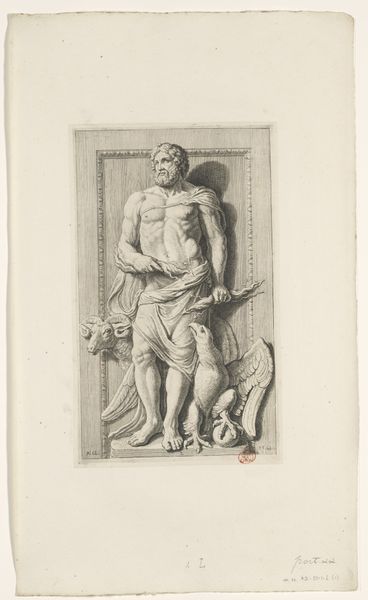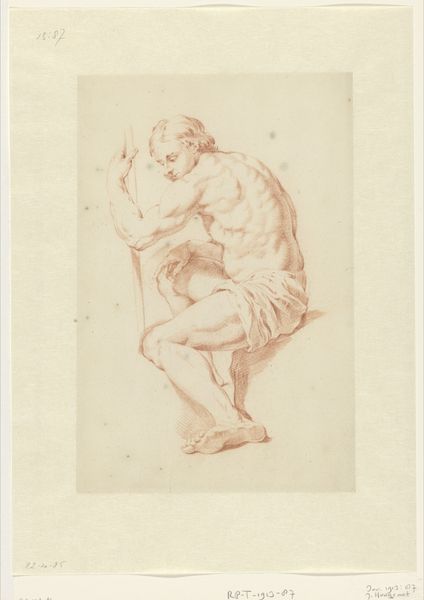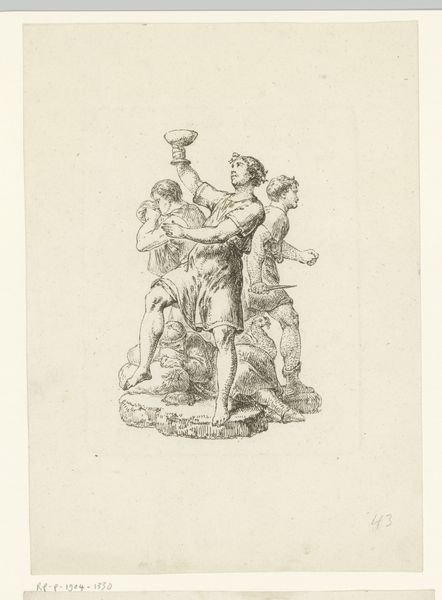
drawing, print, pencil, engraving
#
drawing
#
allegory
#
baroque
# print
#
classical-realism
#
figuration
#
form
#
pencil drawing
#
pencil
#
engraving
Dimensions: height 371 mm, width 220 mm
Copyright: Rijks Museum: Open Domain
This print by Joan Comin depicts Silenus, a figure from Greek mythology often associated with revelry and wine, holding a wineskin. The wineskin is a symbol of intoxication and the ecstatic release from inhibitions, a concept echoed in Dionysian rituals throughout the ancient world. Note the figure of Silenus, his physical form suggesting a life of indulgence. Such imagery appears throughout the Renaissance and Baroque periods, often to caution against excess. Consider, for instance, how the motif of Bacchus, the Roman equivalent of Dionysus, is treated in paintings by artists like Caravaggio, where his intoxication is both alluring and unsettling. Moreover, the presence of the lion at Silenus's feet is no coincidence. The lion, often a symbol of strength and nobility, is here humbled, perhaps suggesting the overpowering influence of wine. These symbols, deeply embedded in classical culture, resurface time and again, reflecting our enduring fascination with the balance between control and abandon, reason and madness. It seems that through this visual language, we continually explore the depths of human experience, revealing the cyclical nature of our cultural memory.
Comments
No comments
Be the first to comment and join the conversation on the ultimate creative platform.
